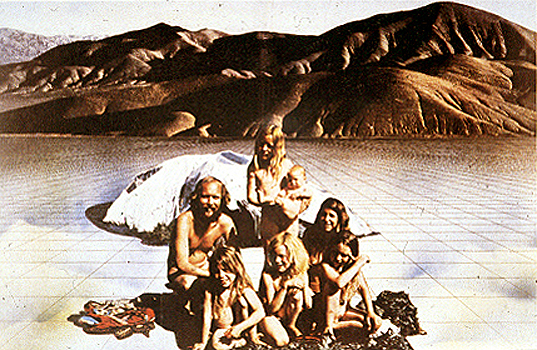
Design as a Narration
To use design as if it were a tale, a story, a litmus paper with – as ingredients – our fears, our vanity, our manifest desires and those unmentionable, without forgetting irony and the taste of paradox.
In the first place design is desire. Necessities can be faced if we understand them first of all as desires. Designing a better world was a dream of the last century: why should we commit the same mistakes again?
Perhaps it would already be sufficient a design able to describe the world, able to make visible the most ambiguous and difficult physical and conceptual places: those that nobody wants to think about.
At most, if we want to be really ambitious, a design that tries to open up some daylights towards other possible worlds.
Walter Aprile, Stefano Mirti, 12 notes and ideas on design (and on teaching it in a cynical and cheating world). In: Hans Hoger, design research, Editrice Abitare Segesta, Milano, 2008.
—
In our previous post, we defined the conceptual boundaries for our projects.
Now, it is time to better define what we want to do through a series of specific case studies.
In terms of keywords, we are talking about: school, education, design, innovative, community.
Learning through narratives
We believe narrative-centered learning environments to be the most effective ones, “schools” as engaging worlds in which students are enabled to build and tell stories which are meaningful to them. Schools themselves have to be part of the narrative line. Whether these stories are organized into fictional or nonfictional narratives is not relevant for the time being. The important thing is that they are self-referential, purposeful and composed of connected events. Here, the goal is to define a school where the student feels to be part of a “story”. This doesn’t happen very often, and this is the reason why it is such an important ingredient.
Furthermore, a very important thing not to be forgotten is: “form follows fiction”.
People don’t need and don’t want new chairs, new houses, new things.
People want new stories.
The Pyramids, the Brooklyn Bridge, an iPhone or a pair of Nike shoes are not simply physical objects. Their main feature is to be a fascinating story.
For schools, it should be the same.
Case studies of narrative-centered schools
In order to proceed forward, we spent some time mapping the most interesting design schools taking this specific point of view into consideration (design schools based on a fascinating and exciting narrative system).
Here, a summary of some of the most interesting narrative-centered schools in the design field:
Architectural Association (1847-)
This independent school of architecture, one of the most prestigious and famous in the world was “in/famously founded by a pack of troublesome students”.
http://www.aaschool.ac.uk
Bauhaus (1919-1933)
This school brought together the most outstanding masters and students seeking to reverse the split between art and production by returning to the crafts as the foundation of all artistic activity.
http://www.bauhaus.de/bauhaus1919
Vkhutemas (1920-1930)
A school where workshops were established in order to prepare master artists of the highest qualifications for industry, and builders and managers for professional-technical education.
http://en.wikipedia.org/wiki/Vkhutemas
Black Mountain College (1933-1957)
Operating in an isolated rural location, this informal and collaborative school, with an interdisciplinary approach, encouraged experimental intelligence and plurality. http://www.blackmountaincollegeproject.org/
Ulm School of Design (1953-1968)
This school acted as a community whose methodological and structured field of study embraced aesthetics as a primary factor, “whose members bestowed structure and stability upon the world around”.
http://en.wikipedia.org/wiki/Ulm_School_of_Design
MIT Media Lab (1985-)
“At the Media Lab, the future is lived, not imagined. Interdisciplinary researchers design technologies for people to create a better future.”
http://www.media.mit.edu/
Fabrica (1994-)
This communications research centre aims to combine culture with industry and offers young people the opportunity for creative growth and multicultural, multidisciplinary interchange.
http://www.fabrica.it/
Interaction Design Institute Ivrea (2001-2005)
Ivrea explored business in addition to design and technology for developing innovative products and services, giving people new ways to interact through communication, network and information technology.
http://en.wikipedia.org/wiki/Interaction_Design_Institute_Ivrea
Mentioned below are some recent examples of schooling institutions where the “narrative” element is central.
KaosPilots (1991-)
“Everything starts with the individual and the individual passion and drive and then spreads with the knowledge of our interdependency. Students at the KaosPilots must explore what they consider to be a positive societal change, and then adjust their actions to aid this development, while allowing and helping others to do the same.”
http://www.kaospilot.dk/
Institute without Bounderies (2003-)
A Toronto-based studio that works towards collaborative design action and seeks to achieve social, ecological and economic innovation where everyone seek to live, learn, work, and play together as a global community.
http://worldhouse.ca/
Khan Academy (2006-)
“Providing a high quality education to anyone, anywhere. Whether you are a student, teacher, home-schooler, principal, adult returning to the classroom after 20 years, or a friendly alien just trying to get a leg up in earthly biology.”
http://www.khanacademy.org/
The School of Life (2008-)
Based in a small shop in Central London, the School offers a variety of programs and services concerned with how to live wisely and well, directing people towards a variety of ideas, from philosophy to literature, psychology to the visual arts that exercise and expand the mind.
http://www.theschooloflife.com/
P2PU (2009-)
An online open learning community allowing users to organize and participate in courses and study groups to learn about specific topics. A DIY wiki-type mentality where anyone can create a course as well as take one.
https://p2pu.org/en/
Trade School (2010-)
A self-organized learning space where students barter with teachers for instruction. Anyone can teach or take a class.
http://tradeschool.ourgoods.org/
Code Academy (2012-)
Committed to building the best learning experience inside and out, the Code Academy’s vision is that every student should have the opportunity to learn how to code, allowing much importance to computer science and computer programming as part of the core curriculum in education.
http://www.code.org/learn/codecademy
—
Stefano Mirti
@stefi_idlab (on Twitter and Instagram)
www.facebook.com/stefano.mirti.3
